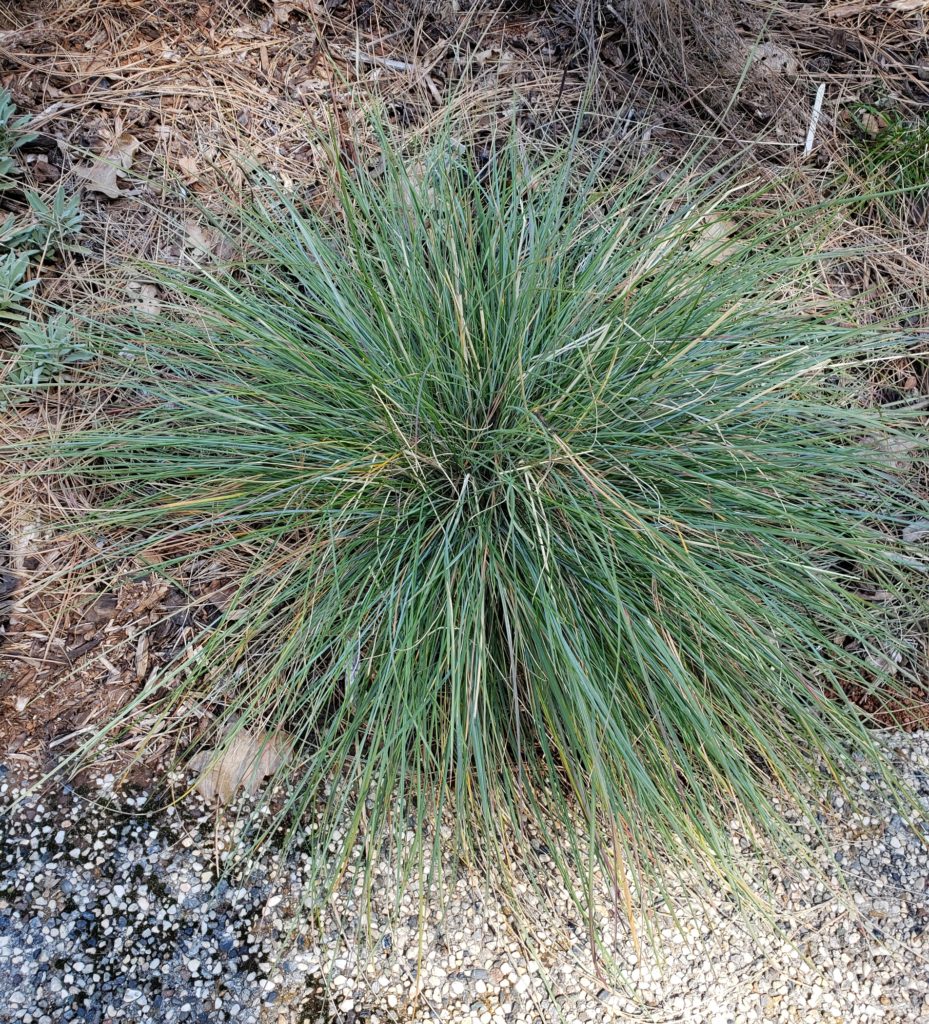Grasses are popular landscape plants, offering a wonderful variety of textures, shapes, and colors.
But we have unique California native grasses that offer more options for our landscapes. While the rest of the world is planting from the same palette of grasses available in the nursery trade, we can choose some beautiful grasses that are well adapted to our soils, climate, that use less water, and support our ecosystems.
The bunchgrasses of California
Most people don’t realize that the wild grasses we see in the greater California landscape are not from here—they’re from the Mediterranean region. Those golden hills along the coast range? They weren’t here before the European missionaries arrived.
What was in California were over 300 species of unique grasses, most of which are perennial bunchgrasses. Grasslands once covered 20% of California’s land, and now only 1-2% of that land remains in native grasses.
The native bunchgrasses are typically drought tolerant with deep and massive fibrous root systems, sometimes 15’ into the soil, giving good erosion control.
They maintain a special soil structure and microorganism community that helps them grow, are fire resilient—coming back after a fire, they naturally grow a little distance from each other to allow water to soak in and allow wildflowers to grow in between them, and they support many insects that are important to California ecosystems.
So how did the European grasses, like wild oats and foxtails, and annuals like mustard get here?
They came in on the boats of the early missionaries probably starting in 1542. They brought livestock and, either accidentally or intentionally, the feed seeds were planted. The plants proliferated.
So now what we see as golden grasses on the hills and all around us are imports that are detrimental to the California landscape. These are the plants that need to be weed-whacked every spring for appearance and fire risk reduction.
The annuals pose a fire risk to the landscapes they’re in because their foliage dries with the onset of hotter weather, and they burn fast.
Perennial bunchgrasses, by contrast, are mostly evergreen and their flowering stems are lower to the ground.
There’s a lot of work being done to restore grasslands, but it’s a difficult process. It requires keeping the annual weeds out! And the special soil community of microbes beneficial to the perennial bunchgrasses is gone and has to restart. And that can take up to 100 years to establish!
But there is hope! Planting native shrubs starts to reestablish the soil’s microbial community.
There are many new growers of native bunchgrasses for landscaping projects and companies like Apple and Facebook are trying to set examples. They have undergone landscaping projects to restore native ecosystems. Apple’s Cupertino campus planted 3 million native plants. And Facebook planted a native landscape on their 3.5 hectare roof!
Use native grasses in your landscape
We can use them in our gardens to make use of their natural beauty and all the benefits they can contribute to our ecosystem.
As landscape plants, native grasses offer: pretty shapes, textures, and colors; drought tolerance (something we always need); foliage that’s eaten by insects that are crucial for birds to eat; and…do we really want to landscape with the same grasses that all the rest of North America uses??
California has one of the most diverse collections of native plants than any state in the US—and they are beautiful. Why not tap into the unique collection of native grasses that not only save water, provide erosion control, help reestablish native microbial soil communities, provide cover and nesting materials to small garden-friendly wildlife, but also look pretty with the unique flavor of a California landscape?
One favorite is California fescue
One of my top choices is California fescue (Festuca californica). A few others used in landscapes are Deergrass (Muhlenbergia rigens), Pacific Reedgrass (Calamagrostis nutkensis), as well as some native sedges.
California fescue is native to our area and much of northern California. It feeds one butterfly and three skippers that are native here (see Calscape.org for more information).
It’s a tall bunchgrass that forms a fairly upright clump with blue-green leaves, growing to 2 – 2 ½ ft. tall with flowering stems reaching another 2 ft. in late spring. It’s an evergreen that grows in the cool season.
It takes full sun to partial shade, making it a good grass to put under the dappled shade we have so much of. Also good for the dry shade under oaks that shouldn’t get irrigation.
And it’s perfect for a meadow garden where wildflowers can grow between the grass plants, and especially for a dry shady meadow! Its roots help more rainwater get absorbed deeply into the soil.
Mine is in a full, hot sun spot and it does well, though a little shade is preferred. I water it a few times through the summer, it has mulch and it’s doing well. And pretty, too!
As with all grasses, deer won’t bother them.
Suncrest Nurseries grows California fescue and other native grasses. Look them up. And ask your local nursery if they can get them in for you when they are available.
A nice-to-read article with more in-depth information is ‘California’s Lying Field of Gold’ by Jessie Szalay is in Asparagus Magazine, March 22, 2018. Be sure to listen to the Kate Wolf song about the “golden hills” of California that’s included.
You may be thinking differently about California’s landscapes now.

